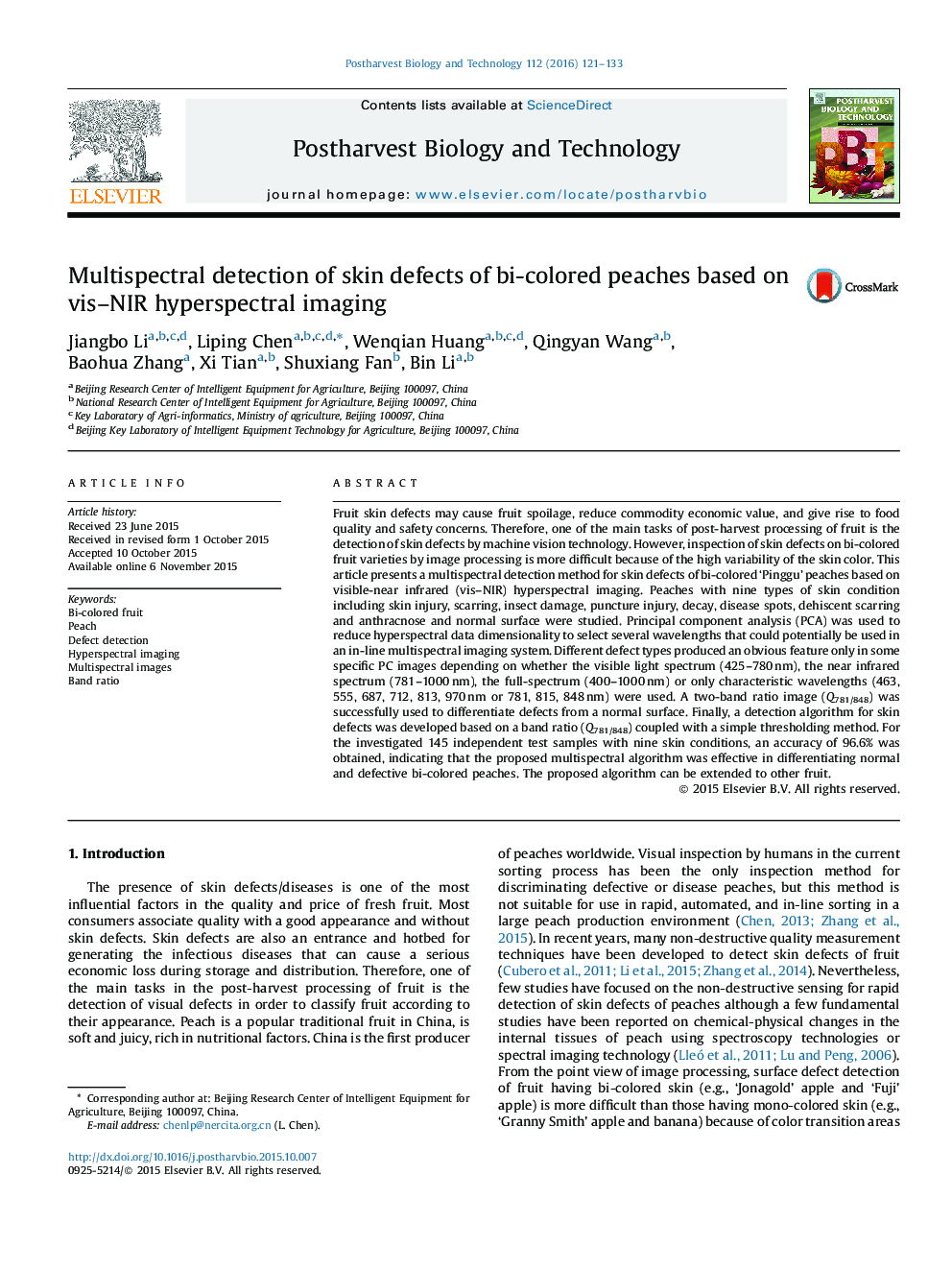| کد مقاله | کد نشریه | سال انتشار | مقاله انگلیسی | نسخه تمام متن |
|---|---|---|---|---|
| 4517930 | 1624982 | 2016 | 13 صفحه PDF | دانلود رایگان |

• Inspection of skin defects on bi-colored fruit varieties is difficult.
• A hyperspectral imaging (325–1100 nm) was used to detect peach skin defects.
• PCA was used to reduce data dimensionality and to select key wavelengths.
• A two-band ratio image was determined to be more effective than all PC images.
• Multispectral imaging may be useful for on-line detection of peach skin defects.
Fruit skin defects may cause fruit spoilage, reduce commodity economic value, and give rise to food quality and safety concerns. Therefore, one of the main tasks of post-harvest processing of fruit is the detection of skin defects by machine vision technology. However, inspection of skin defects on bi-colored fruit varieties by image processing is more difficult because of the high variability of the skin color. This article presents a multispectral detection method for skin defects of bi-colored ‘Pinggu’ peaches based on visible-near infrared (vis–NIR) hyperspectral imaging. Peaches with nine types of skin condition including skin injury, scarring, insect damage, puncture injury, decay, disease spots, dehiscent scarring and anthracnose and normal surface were studied. Principal component analysis (PCA) was used to reduce hyperspectral data dimensionality to select several wavelengths that could potentially be used in an in-line multispectral imaging system. Different defect types produced an obvious feature only in some specific PC images depending on whether the visible light spectrum (425–780 nm), the near infrared spectrum (781–1000 nm), the full-spectrum (400–1000 nm) or only characteristic wavelengths (463, 555, 687, 712, 813, 970 nm or 781, 815, 848 nm) were used. A two-band ratio image (Q781/848) was successfully used to differentiate defects from a normal surface. Finally, a detection algorithm for skin defects was developed based on a band ratio (Q781/848) coupled with a simple thresholding method. For the investigated 145 independent test samples with nine skin conditions, an accuracy of 96.6% was obtained, indicating that the proposed multispectral algorithm was effective in differentiating normal and defective bi-colored peaches. The proposed algorithm can be extended to other fruit.
Journal: Postharvest Biology and Technology - Volume 112, February 2016, Pages 121–133